Abstract
1. Seventy high threshold mechanoreceptor units (HTMs) with myelinated axons were isolated from the sural nerves of cats and rabbits. Thirteen cat and forty-two rabbit HTMs were testec by controlled, repeated heating of the skin of the foot or lower leg to noxious levels. 2. Many of the units (77% in the cat and 40% in the rabbit) fired to heating. Only six (11%) of these fired to the first brief heating to 50-55 degrees C. The rest required 2-6 heat trials before responding. 3. Heat responding units always became more sensitive with repeated heat stimulation but their mechanical sensitivity showed no comparable changes when heat sensitization occurred. 4. If these results are applicable to man, they suggest that HTMs play little role in generating the first pain that follows skin heating but that they may be involved in the increased sensitivity to heat pain (hyperalgesia) shown by skin previously injured by heating.
Full text
PDF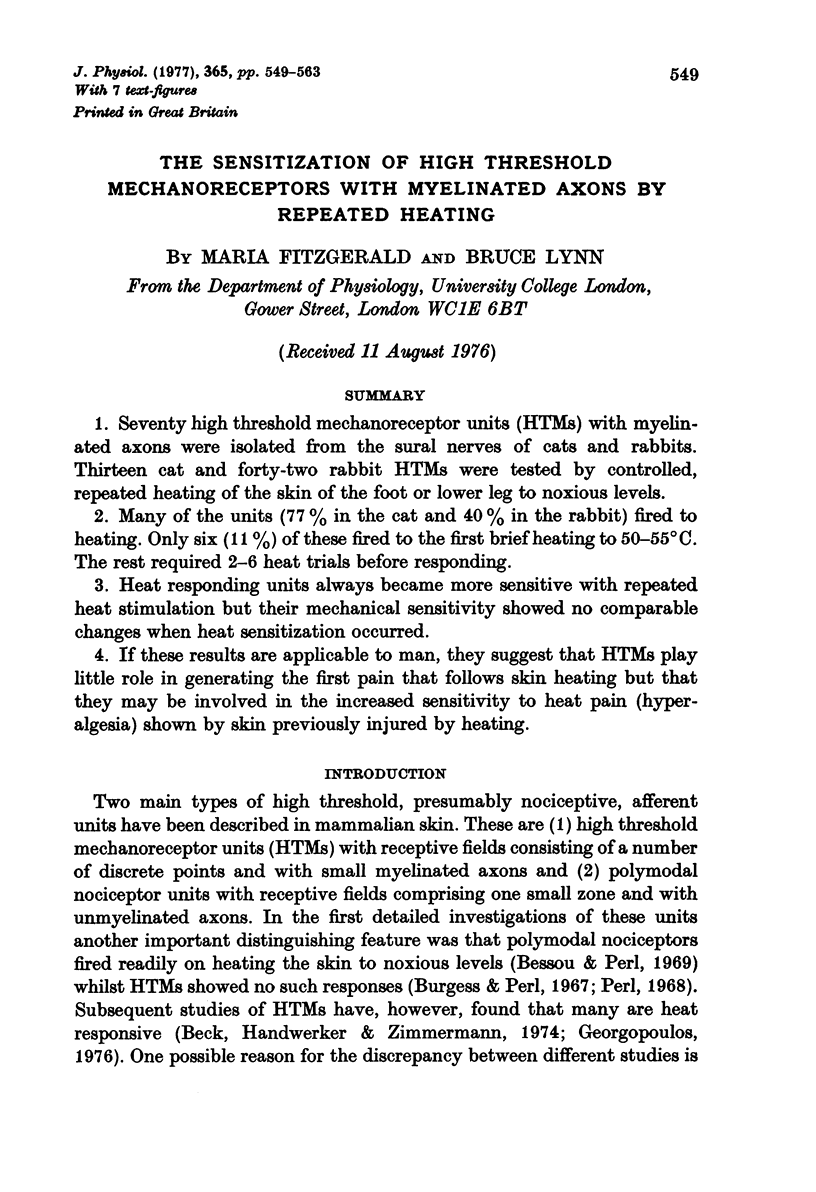
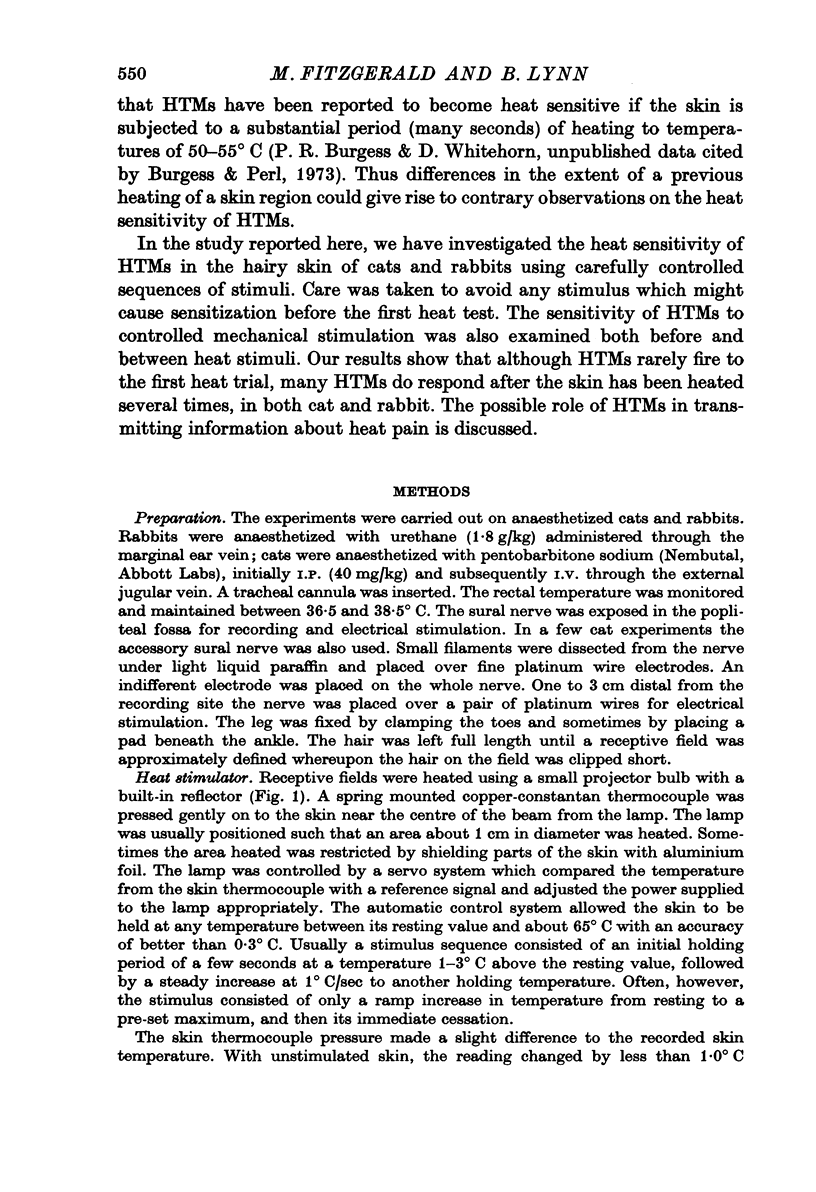
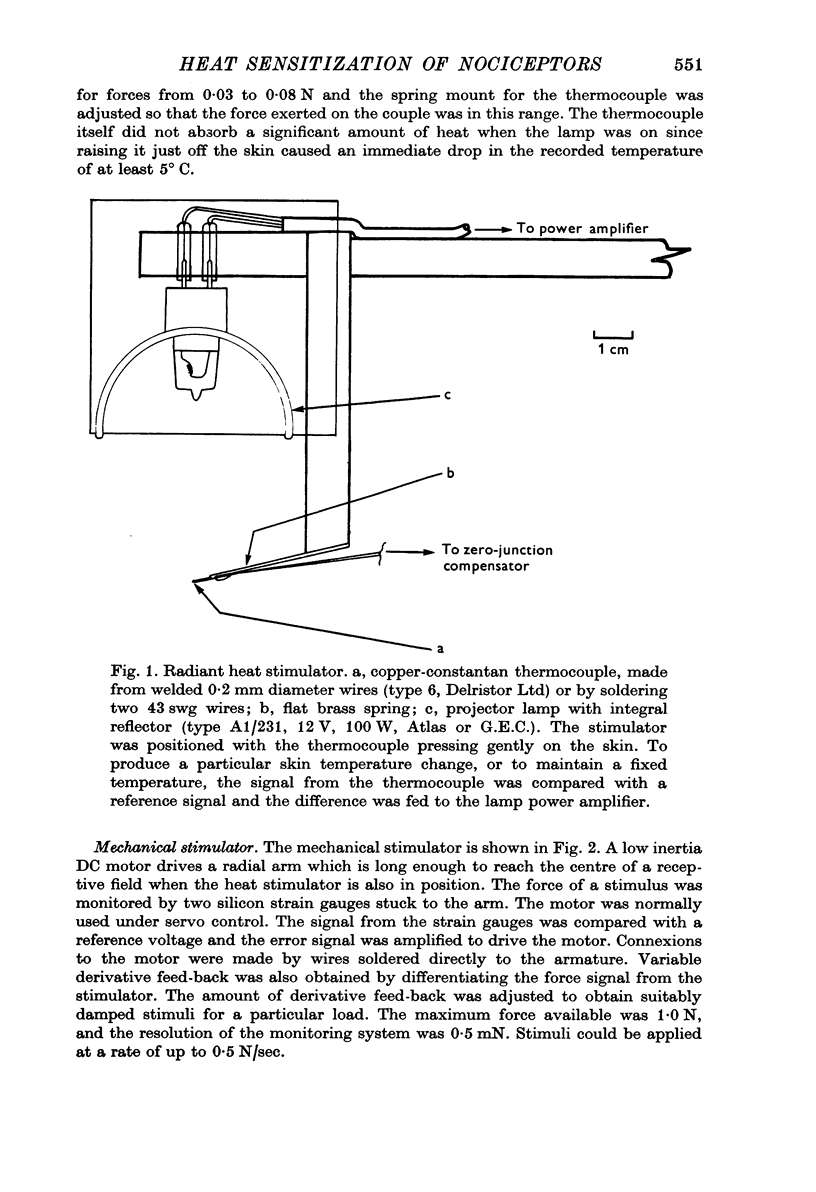
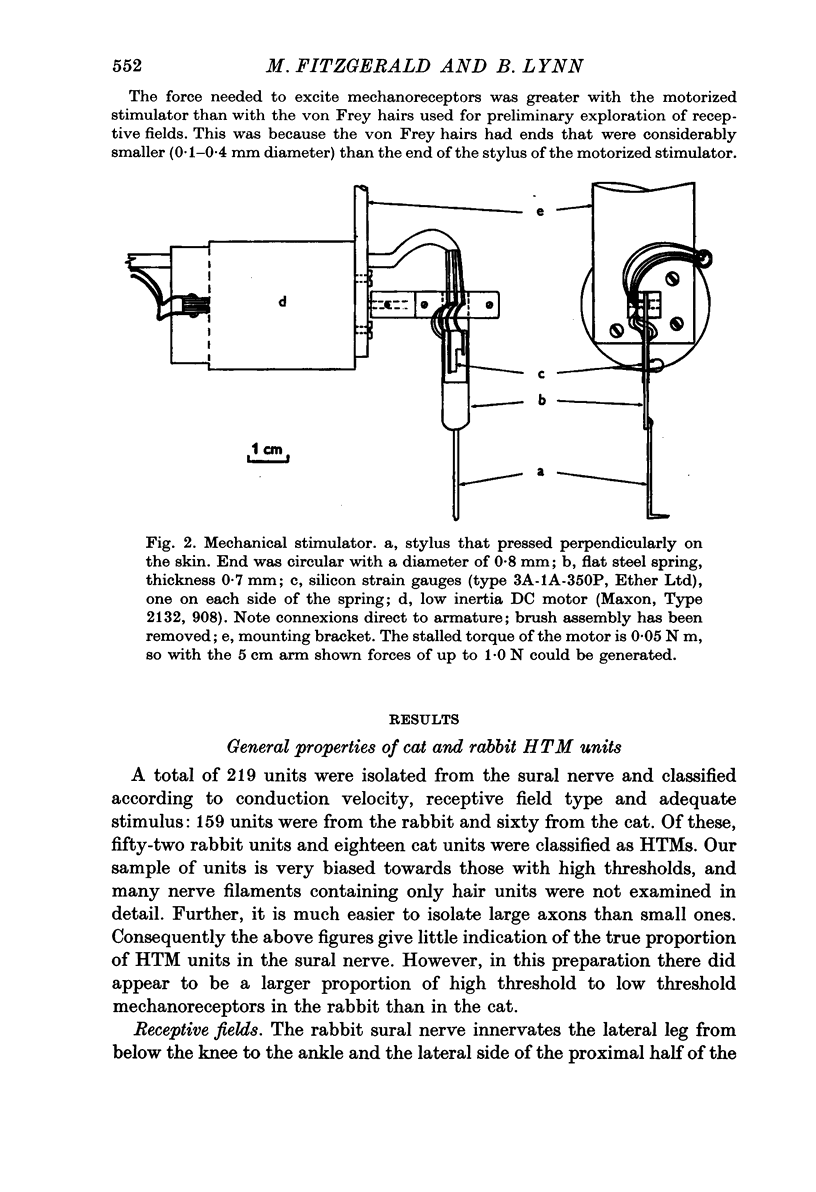
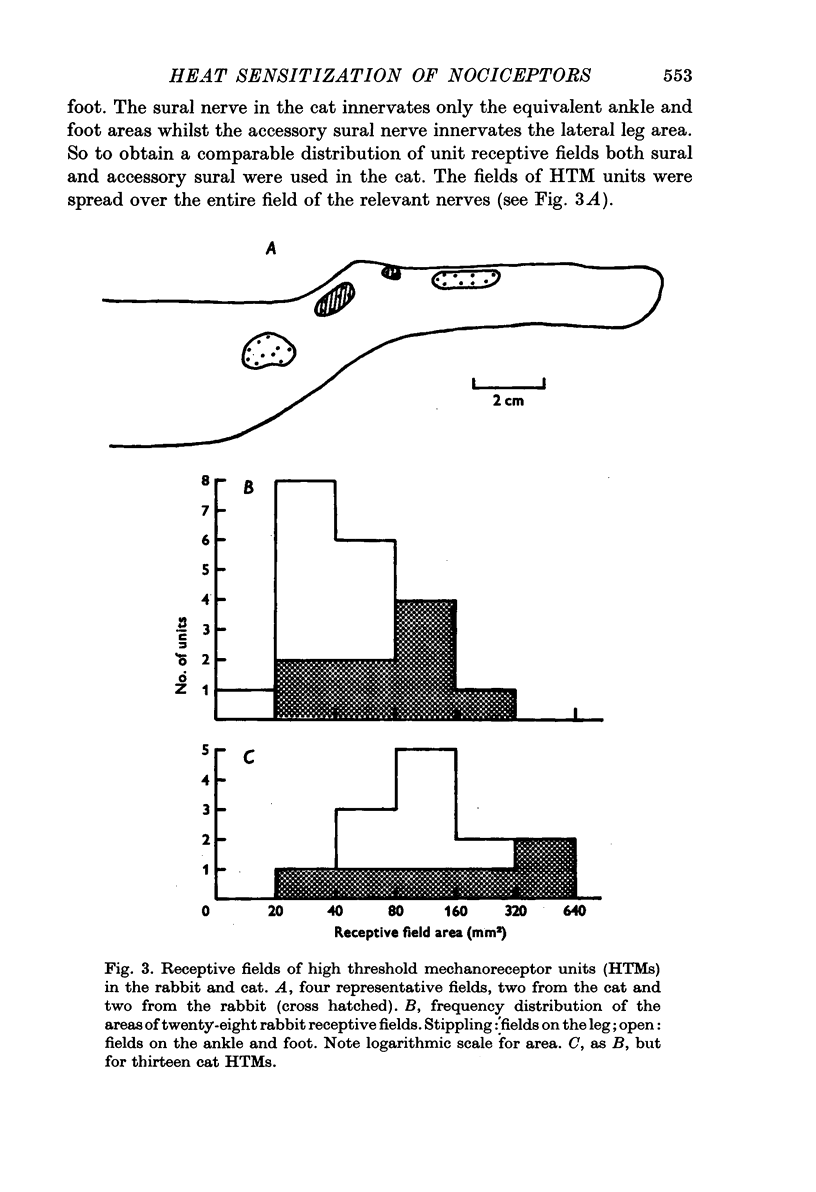
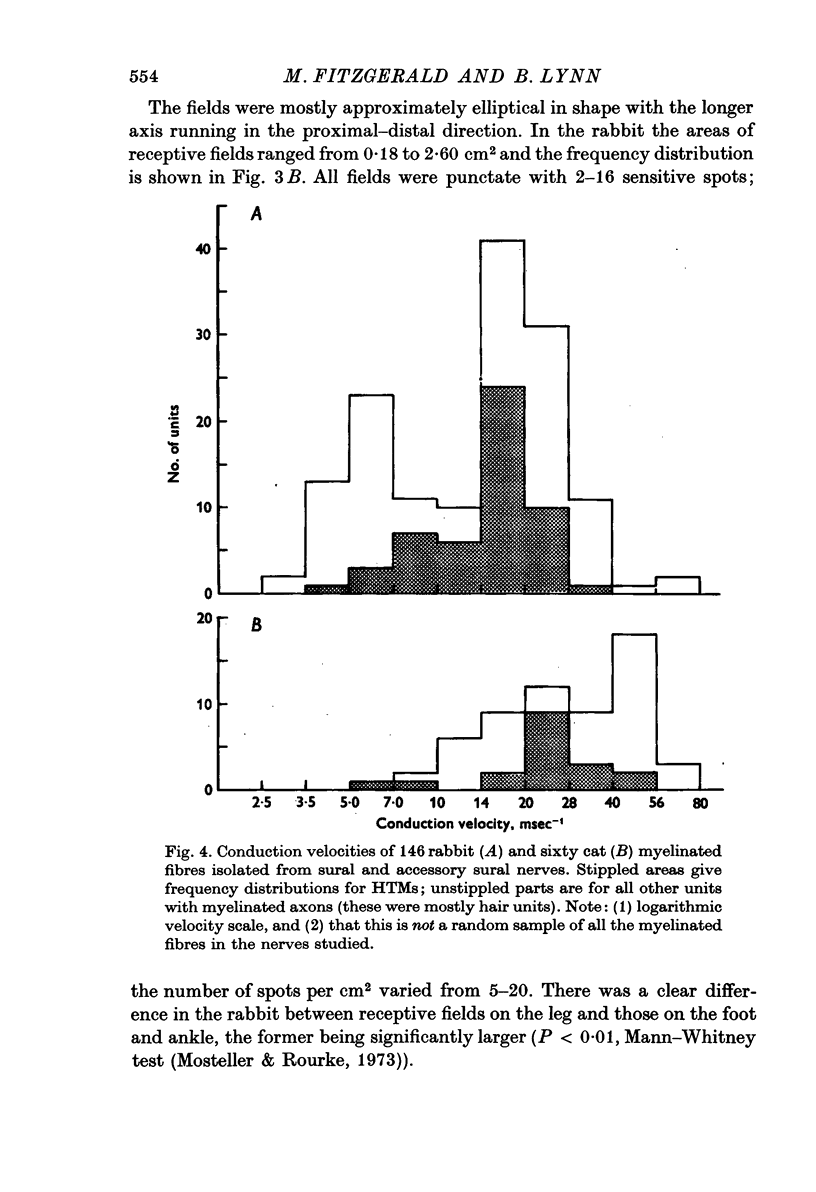
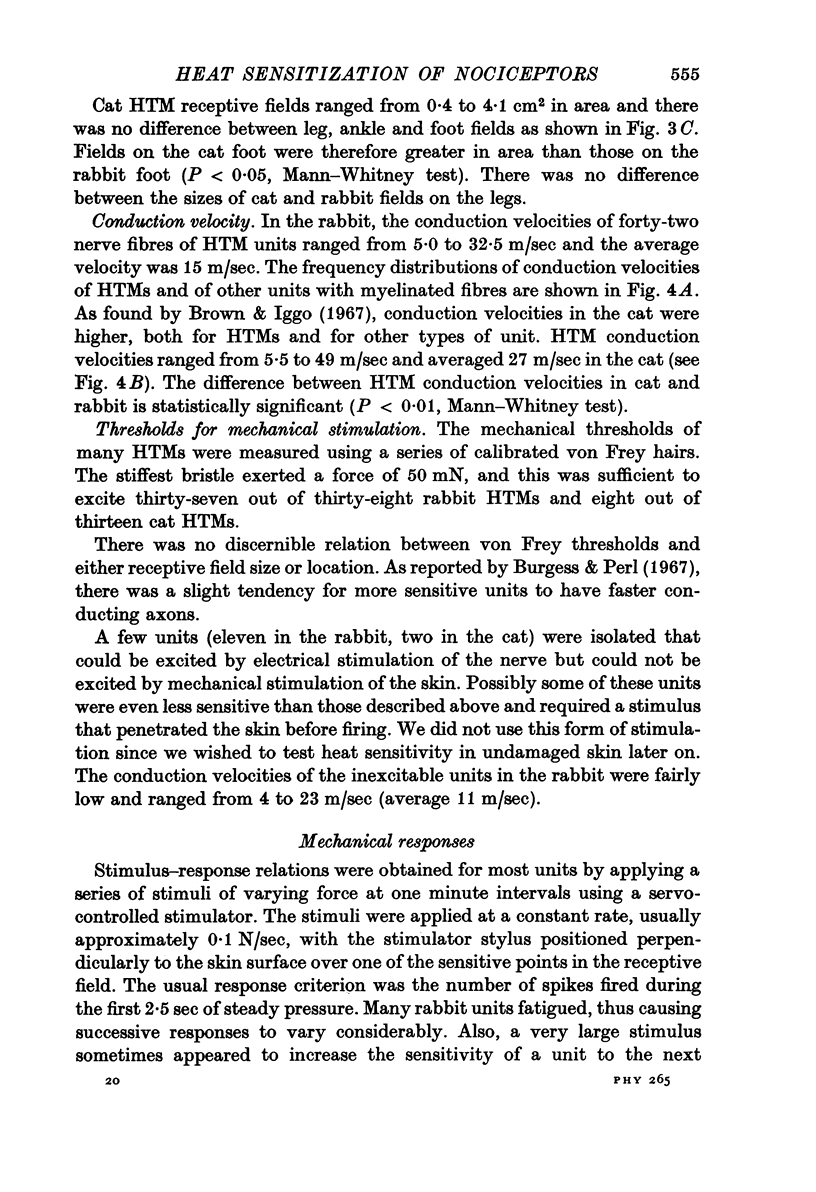
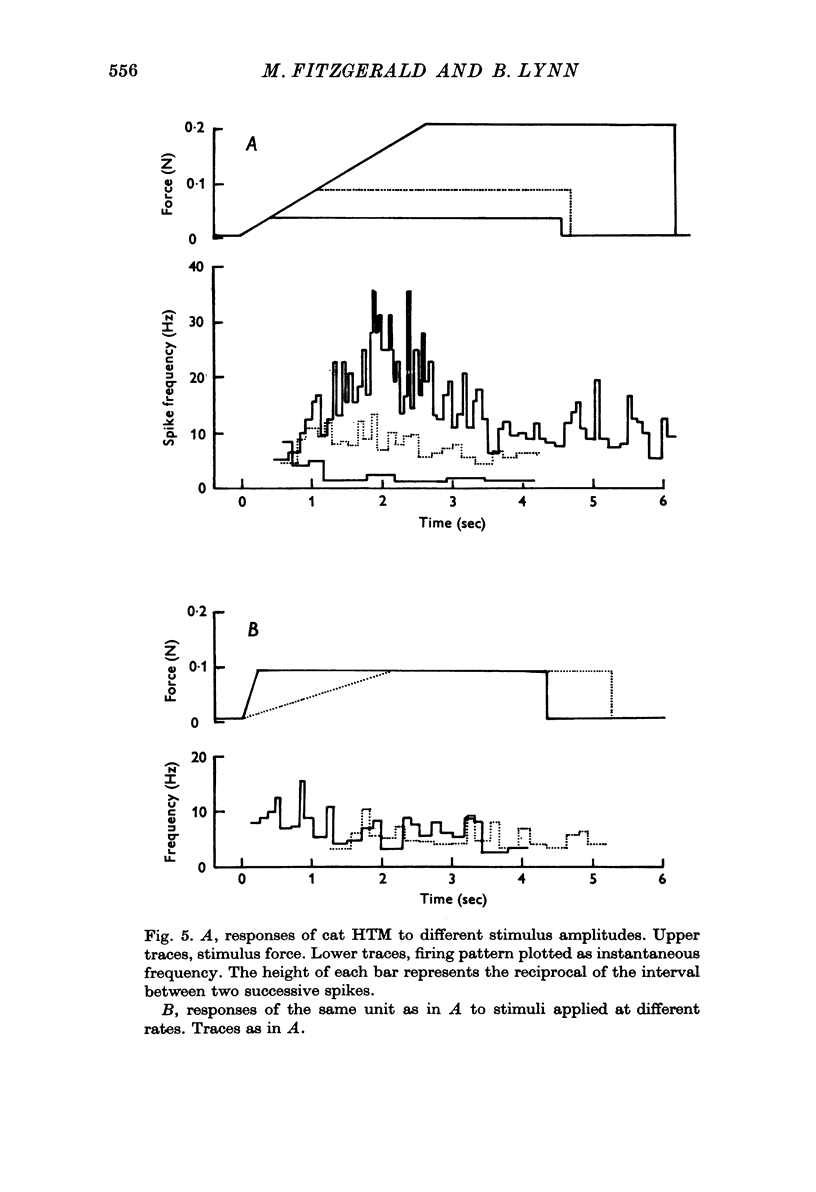
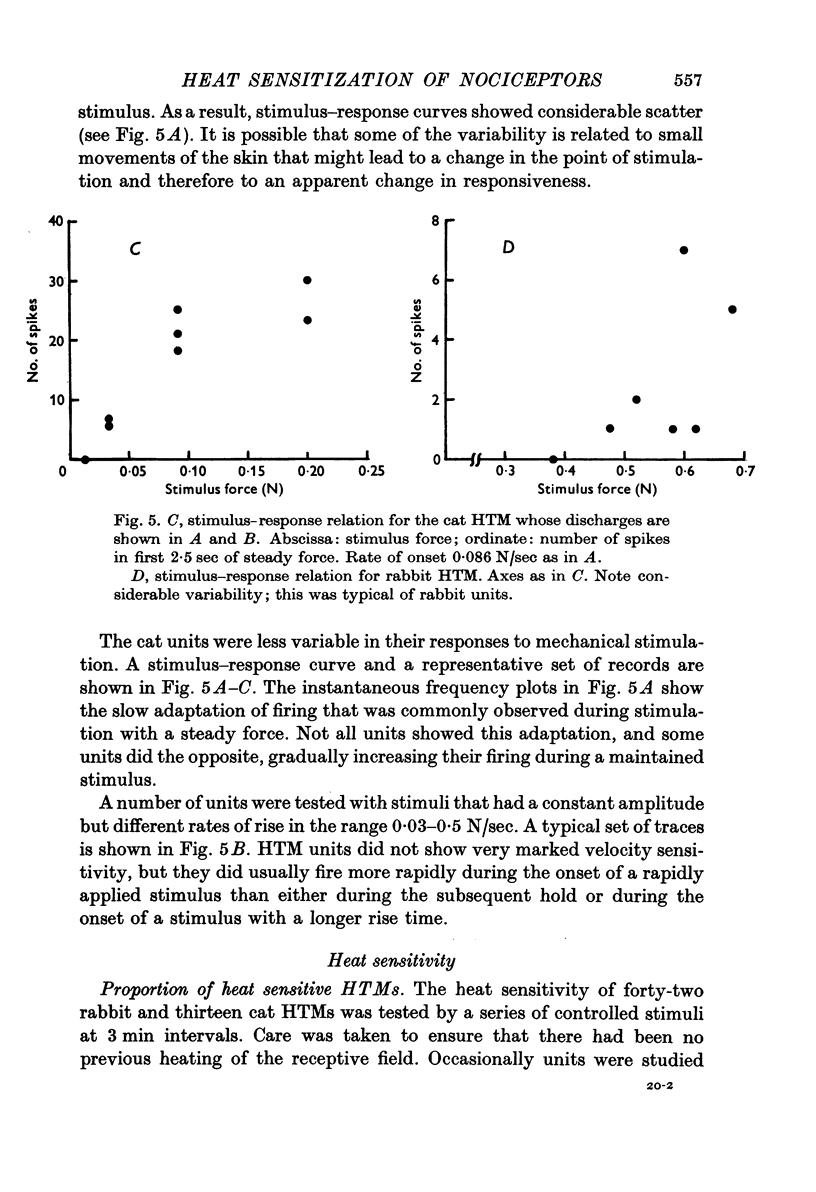
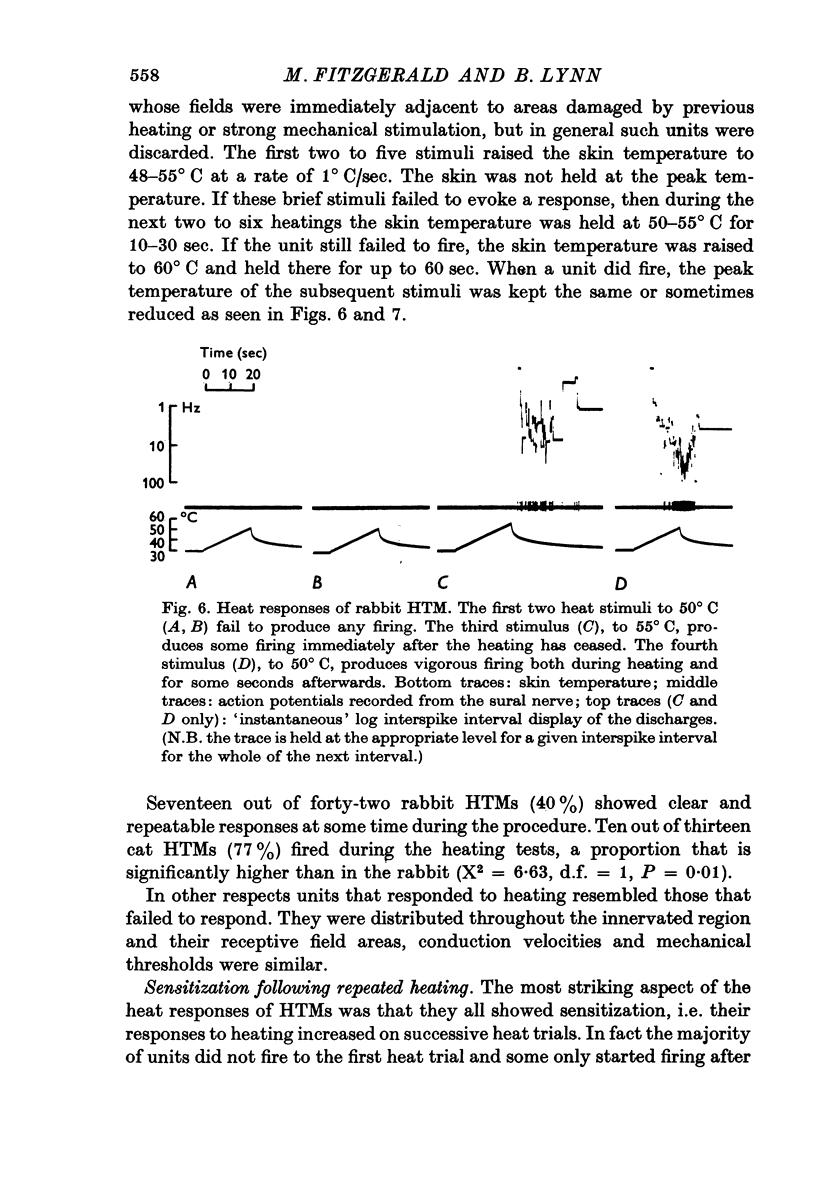
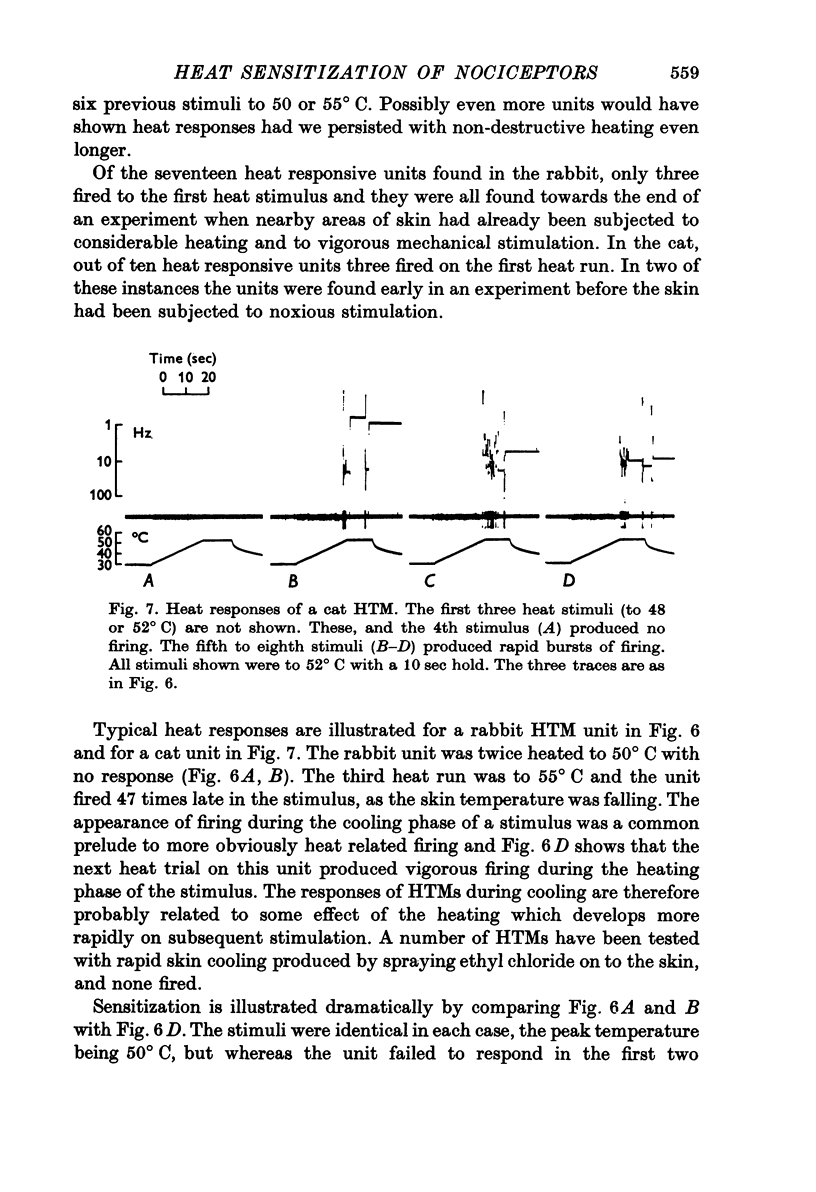
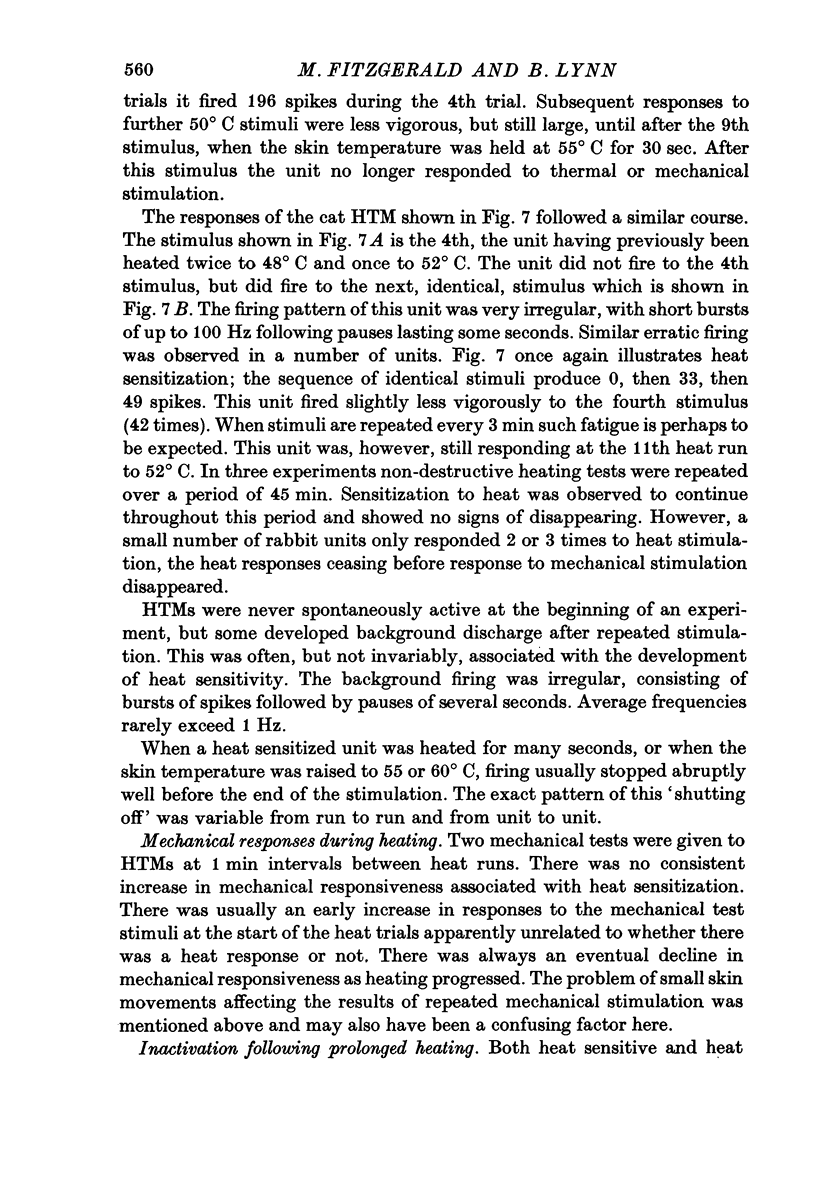
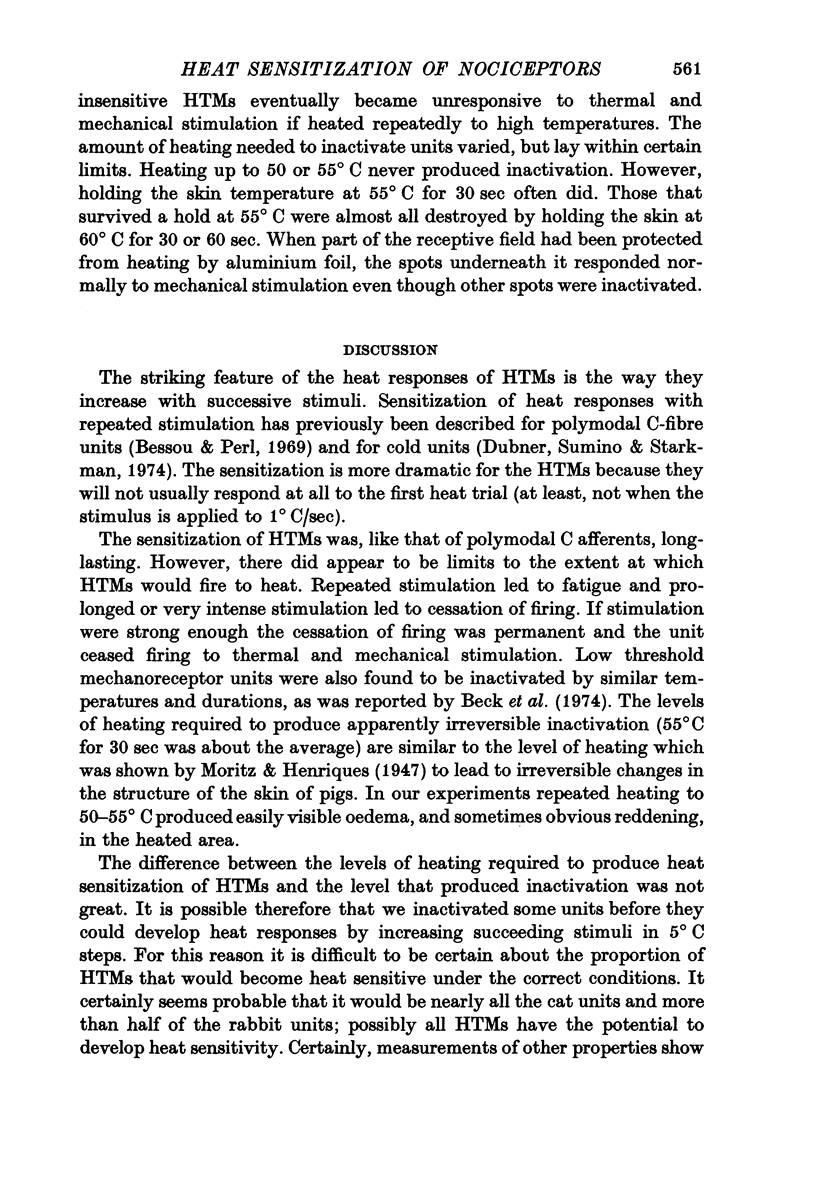
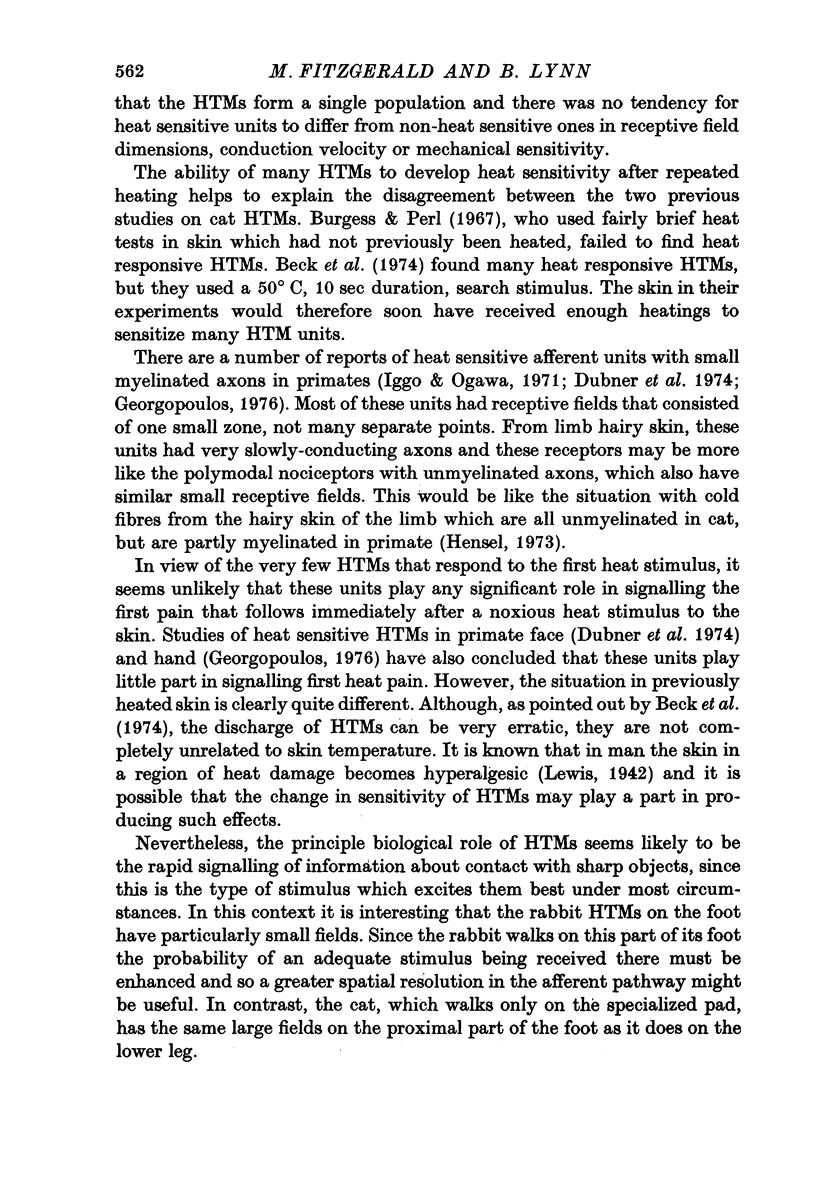
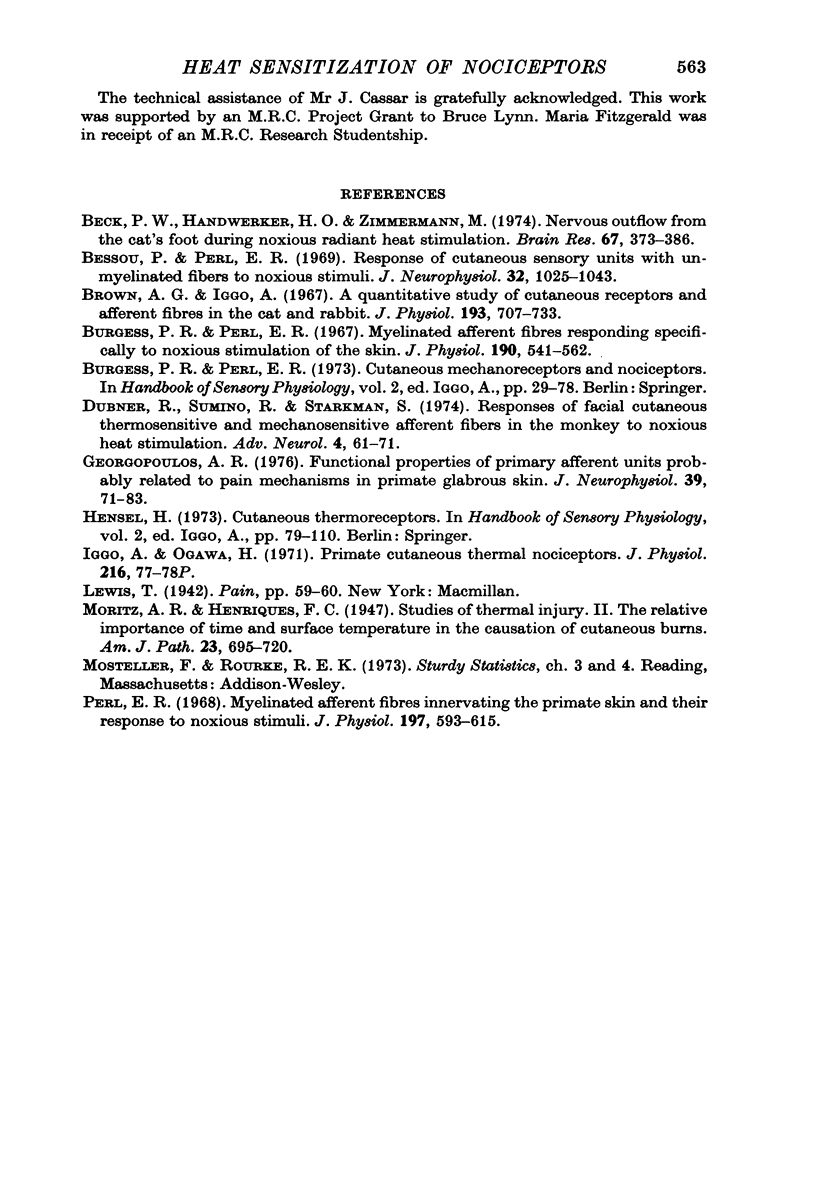
Selected References
These references are in PubMed. This may not be the complete list of references from this article.
- Beck P. W., Handwerker H. O., Zimmermann M. Nervous outflow from the cat's foot during noxious radiant heat stimulation. Brain Res. 1974 Mar 8;67(3):373–386. doi: 10.1016/0006-8993(74)90488-0. [DOI] [PubMed] [Google Scholar]
- Bessou P., Perl E. R. Response of cutaneous sensory units with unmyelinated fibers to noxious stimuli. J Neurophysiol. 1969 Nov;32(6):1025–1043. doi: 10.1152/jn.1969.32.6.1025. [DOI] [PubMed] [Google Scholar]
- Brown A. G., Iggo A. A quantitative study of cutaneous receptors and afferent fibres in the cat and rabbit. J Physiol. 1967 Dec;193(3):707–733. doi: 10.1113/jphysiol.1967.sp008390. [DOI] [PMC free article] [PubMed] [Google Scholar]
- Burgess P. R., Perl E. R. Myelinated afferent fibres responding specifically to noxious stimulation of the skin. J Physiol. 1967 Jun;190(3):541–562. doi: 10.1113/jphysiol.1967.sp008227. [DOI] [PMC free article] [PubMed] [Google Scholar]
- Georgopoulos A. P. Functional properties of primary afferent units probably related to pain mechanisms in primate glabrous skin. J Neurophysiol. 1976 Jan;39(1):71–83. doi: 10.1152/jn.1976.39.1.71. [DOI] [PubMed] [Google Scholar]
- Iggo A., Ogawa H. Primate cutaneous thermal nociceptors. J Physiol. 1971 Jul;216(2):77P–78P. [PubMed] [Google Scholar]
- Moritz A. R., Henriques F. C. Studies of Thermal Injury: II. The Relative Importance of Time and Surface Temperature in the Causation of Cutaneous Burns. Am J Pathol. 1947 Sep;23(5):695–720. [PMC free article] [PubMed] [Google Scholar]
- Perl E. R. Myelinated afferent fibres innervating the primate skin and their response to noxious stimuli. J Physiol. 1968 Aug;197(3):593–615. doi: 10.1113/jphysiol.1968.sp008576. [DOI] [PMC free article] [PubMed] [Google Scholar]


